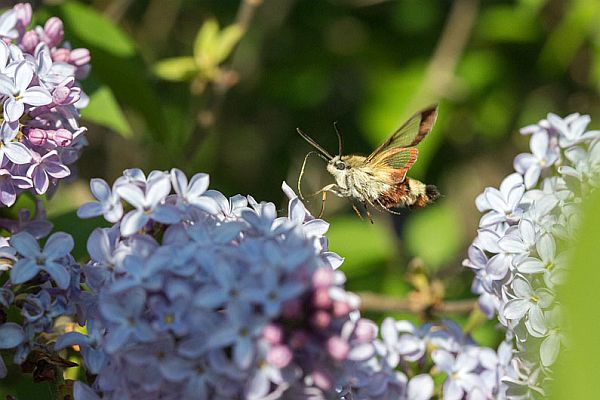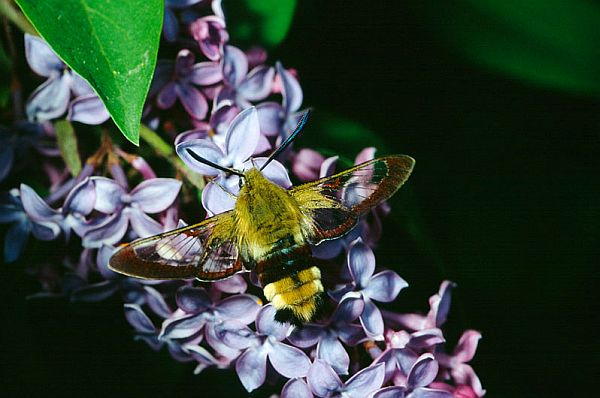Broad-bordered bee hawkmoth Kimalas-lottsuru Hemaris fuciformis
We are used to notice the flight of the hawkmoths in the evening, and so it is with most of the hawkmoth species that can be seen in Estonia (there are 17 species here).
For a hawkmoth busy in daytime the broad-bordered bee haawkmoth is almost always a safe guess; at that time the other species are resting on tree trunks, little visible thanks to their good camouflage colouring.
The hawkmoths belong to the butterfly or Lepidoptera order, with sturdy bodies and wings with pointed tips. They are very good fliers compared to other butterflies (they can move their wings very quickly; which is accompanied by a pleasant whirring sound) and also noteworthy migrants who can travel across considerable distances.
The Estonian name ”suru” is based on their flying habit – in feeding from a flower they do not land on the flower but hover at it, “pressing” (suru) near it. The common name of a species often brings up different aspects of the looks and character of the species. The English name hawkmoth also refers to their fast flight and ability to hover in flight. Hummingbird moth, another common name, takes note of the whirring sound from their fast-moving wings. They are also known as sphinx moths..
The broad-bordered hawkmoth looks very similar to a bumblebee, with its banded abdomen and the translucent wings. In the lower of Arne’s photos the long proboscis or sucking tube is visible which reaches into quite deep flowers
Broad-bordered bee hawkmoth




